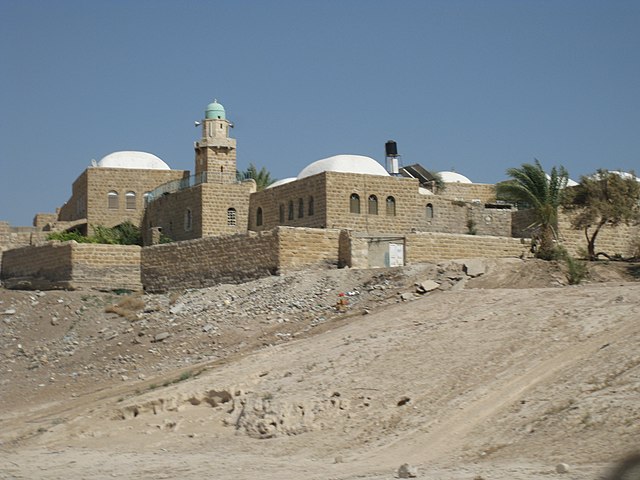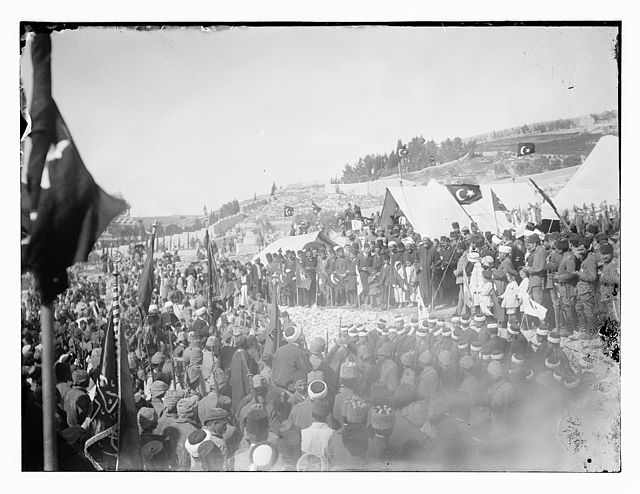The 1920 Nebi Musa riots or 1920 Jerusalem riots took place in British-controlled part of Occupied Enemy Territory Administration between Sunday, 4 April, and Wednesday, 7 April 1920 in and around the Old City of Jerusalem. Five Jews were killed and several hundred injured; four Arabs were killed, and eighteen injured; 7 Britons were injured. The riots coincided with and are named after the Nebi Musa festival, which was held every year on Easter Sunday, and followed rising tensions in Arab-Jewish relations. The events came shortly after the Battle of Tel Hai and the increasing pressure on Arab nationalists in Syria in the course of the Franco-Syrian War.
Nebi Musa procession, 4 April 1920
British security forces searching Arab civilians, April 1920
Anti-Zionist demonstration at Damascus Gate, 8 March 1920
Arab demonstrators in front of the Jerusalem municipality building, 1920
Nabi Musa is primarily a Muslim holy site near Jericho in Palestine, where a local Muslim tradition places the tomb of Moses. The compound is centered on a mosque which contains the alleged tomb. It used to be the site of an eponymous seven-day-long religious festival that was celebrated annually by Palestinian Muslims, beginning on the Friday before Good Friday in the Orthodox calendar used by the Greek Orthodox Church of Jerusalem. Considered in the political context of 1920 as "the most important Muslim pilgrimage in Palestine", the festival was built around a collective pilgrimage from Jerusalem to what was understood to be the Tomb of Moses. A great building with multiple domes marks the mausoleum of Moses.
Nabi Musa, 2010
The maqam of Nabi Musa
Ottoman flags fly over the Nabi Musa procession for the last time, in 1917
Nabi Musa pilgrimage sets out from Jerusalem 1936








